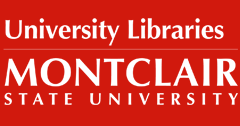Document Type
Article
Publication Date
1-1-2006
Journal / Book Title
Mathematical Biosciences & Engineering
Abstract
Ecstasy has gained popularity among young adults who frequent raves and nightclubs. The Drug Enforcement Administration reported a 500 percent increase in the use of ecstasy between 1993 and 1998. The number of ecstasy users kept growing until 2002, years after a national public education initiative against ecstasy use was launched. In this study, a system of differential equations is used to model the peer-driven dynamics of ecstasy use. It is found that backward bifurcations describe situations when sufficient peer pressure can cause an epidemic of ecstasy use. Furthermore, factors that have the greatest influence on ecstasy use as predicted by the model are high-lighted. The effect of education is also explored, and the results of simulations are shown to illustrate some possible outcomes.
DOI
10.3934/mbe.2006.3.249
MSU Digital Commons Citation
Song, Baojun; Castillo-Garsow, Melissa; Ríos-Soto, Karen R.; Mejran, Marcin; Henso, Leilani; and Castillo-Chavez, Carlos, "Raves, Clubs and Ecstasy: The Impact of Peer Pressure" (2006). Department of Applied Mathematics and Statistics Faculty Scholarship and Creative Works. 108.
https://digitalcommons.montclair.edu/appliedmath-stats-facpubs/108
Published Citation
Song, B., Castillo-Garsow, M., Ríos-Soto, K. R., Mejran, M., Henso, L., & Castillo-Chavez, C. (2006). Raves, clubs and ecstasy: the impact of peer pressure. Mathematical Biosciences & Engineering, 3(1), 249.


Comments
This article is Open Access and distributed under a Creative Commons Attribution License (https://creativecommons.org/licenses/by/4.0)